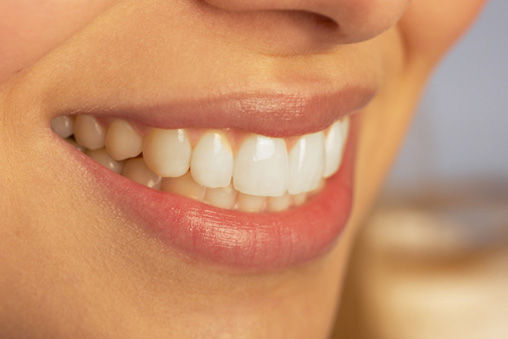

  |
 
 |
 |

 When to StartWhen people think of orthodontics, they think of a teenager between the ages of 13 – 14. However, the American Association of Orthodontics recommends that your child get an orthodontic check-up no later than the age of 7. By age 7 most children have a mixture of both baby and adult teeth. An orthodontist can spot subtle problems with jaw growth and emerging teeth while some baby teeth are still present. This is important because orthodontic problems are easier to correct if they are found early.Call us at 519-942-2322 or email us at tingrins@hotmail.ca. First Visit Dr. Bacchus and his team will listen to the patient’s concerns and provide a free orthodontic examination. Dr. Bacchus will be able to indicate whether or not treatment is needed, and if treatment is required, when the best time to start treatment would be. We will discuss with you fees for orthodontic care, general payment options and insurance benefits. Once treatment is agreed upon, Dr. Bacchus will gather information to set up a treatment plan for the patient – this would include taking diagnostic records. Diagnostic records include x-rays, photographs and impressions of the teeth. These molds are what the doctor looks at in determining how the upper and the lower teeth relate to each other. X-rays are taken to look at the root structure of the teeth and how the jaw bones and teeth relate to each other. Overall, diagnostic records enable the Doctor to develop an appropriate treatment plan for the patient.
There are two
or three stages of orthodontic treatment. Most patients benefit from an
active corrective stage followed by a retention stage. Some patients will
benefit from two active treatment stages often referred to as two-phase
treatment. Dr. Bacchus will discuss each phase with the patient and/or
parents so they have realistic expectations. The Growth of the Face – Why Treatment May Take Longer Growth of the face is of critical importance to Dr. Bacchus. It is a constant subject of study and analysis. Dr. Bacchus will evaluate the individual growth pattern of each young patient in order to plan treatment accordingly. Methods of analysis have been developed from numerous studies on large groups of individuals and can be used with statistics to predict what kind of growth to expect in each person. The key to successful treatment is using growth or directing it in our favor to correct the teeth and bite, and hinder unfavorable growth patterns. The earlier we see a patient and analyze their growth, the better we are able to do this. Growth of the face can have a tremendous impact on the progress of the treatment. It can help or hinder tooth movement, depending on the patients level of development. And when detected at the right time, it can help treatment progress faster. Lack of growth can also have a tremendous impact on treatment and can mean the difference between extracting teeth or in some cases surgery can be required! So early detection of the type of growth pattern, and how the teeth are aligned is of critical importance in orthodontic treatment and its why the American and Canadian Association of Orthodontics recommends that your child get an orthodontic check-up no later than the age of 7. Dr. Bacchus feels careful consideration of the patient’s growth pattern can help achieve the desired treatment goal and give you a wonderful that’s good for life.
Teeth respond to the gentle pressures or forces that are applied. Braces are made up of brackets and wires. Brackets are the part of the braces that attach to the teeth. Brackets are like the steering wheel of a car – it controls the movement of the teeth. Braces require a wire called and archwire that connects the brackets and provide the forces to steer the teeth in the proper direction. The wire is what actually moves the teeth. The interaction of the brackets and archwires enables Dr. Bacchus to have three-dimensional control over the movement of the teeth. Sometimes, additional forces are needed to help balance the underlying jaw structure and to help the upper and lower teeth fit properly together to make the bite right. The extra forces can include elastics hooked to the teeth, expanders, or other jaw modifying appliances.
Orthodontics is very different from medicine or regular dentistry. The orthodontist and the staff cannot do all the work for you. The success of the treatment depends on a partnership between you, the assistants and the orthodontist. Everyone has a job. The Orthodontist and Staff determine the problem, recommend the treatment, make a plan of action and carry out the plan step by step. They teach the proper diet, efficient hygiene techniques, treatment objectives and how the patient must help. Parents and friends are supportive, understanding, gently coaching and always caring. The Patient understands why the teeth are being straightened and the treatment plan, brushes after eating anything and flosses at least once each day, avoids hard and sticky foods and minimizes sugar in the diet, always wears elastics and other appliances, keeps all appointments and arrives on time, and reports lost or broken appliances. You have to help. We can do a technically perfect job but unless you are healthy and working hard the final results will not be successful. Cooperation
Moves Teeth! |
Dr
Bacchus is a specialist in orthodontics, practicing in Orangeville.
Fixing bad bites is the job of the orthodontist – a dental specialist
who diagnoses, prevents and treats dental and facial irregularities. By
learning about tooth movement (orthodontics) and guidance of facial
|
development
(dentofacial orthopedics), orthodontists are the uniquely trained experts
in dentistry to straighten teeth and align jaws to create optimal facial
harmony. If you are looking for an orthodontist, please call us for a
consultation. |
|||